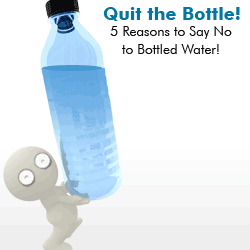
It is believed that because the short half-life of radon usually results in low levels in public water supplies, while higher in well water. In public systems, much of the radon will have decayed before the water is delivered to users, especially if the water has gone through air-exposed treatment processes. Since a private well delivers water to only one or two households, there is a greater chance the radon will not dissipate before the water is consumed.
Since radon will decay, storage of water for any significant time will allow radioactivity to diminish. A household using 150 gallons of water per day would require 1,800 gallons of storage to achieve 90 percent radon reduction and 3,700 gallons to achieve 99 percent reduction in radon.
Radon is a naturally occurring, colorless, odorless, water-soluble gas produced by the radioactive decay of radium. Radium, which emits radon gas, is a radioactive metallic chemical element found in pitchblende and other uranium minerals. It is common in the earths crust. Radon breaks down in a natural, spontaneous process or "decays" to form other elements. The rate of radons radioactive decay is defined by its half-life, which is the time required for one half of any amount of the element to break down. The half-life of radon is 3.8 days. All rocks contain some trace uranium concentrations. The highest concentrations are in plutonic rocks, such as granite. Because the source of radon is the radioactive decay of uranium, higher radon amounts are commonly detected in areas underlain by granites, dark shales, light-colored volcanic rocks, sedimentary rocks containing phosphate, and metamorphic rocks. High levels of radon have been found in all 50 states.
What is the measurement of radon? Radon levels are measured in picocuries per liter (pCi/L). Measured levels range from <10 pCi/L to >1.5 million pCi/L (an activity of one pCi/L is about equal to the decay of two atoms of radon per minute in each liter of air or water). What radioactive contaminants can be found in well water? Certain minerals are radioactive and may emit forms of radiation known as photons and beta radiation and some may emit a form of radiation known as alpha radiation. Some people who drink water containing alpha emitters in excess of the Maximum Contaminant Level (MCL) over many years may have an increased risk of getting cancer.
Why do we test for radon? For every 10,000 pCi/L, about 1 pCi/L is released to indoor air, depending on the conditions, and these are the levels at which health concerns typically begin. Fortunately, radon in air and in ground water, once identified, can be eliminated. Exposure to radon has been recognized as a health risk. The two diseases of principal concern are stomach cancers from ingestion of radon and lung cancer from inhalation of radon byproducts. Radon gas can cause lung cancer if inhaled because the products of its decay can accumulate in the lungs and damage lung tissue. As it decays, radon produces several short-lived elements that are also radioactive. Radon and these decay-products emit alpha particles that, because of their high energy, can damage lung tissue. Although most radon is exhaled before it can do much damage, the decay-products can remain trapped in the respiratory system, attached to dust, smoke, and other fine particles from the air.
Eventually, the concentration of these radioactive elements in constant, close contact with lung tissue can cause cancer. The health risk of radon inhalation is believed to be many times greater than the risk resulting from direct ingestion of radon contained in water, although it has been estimated that there is an increased lifetime stomach cancer risk of between 0.25 1.0 percent per 100,000 pCi/L in a water supply. There is no direct evidence of cancers of the internal organs of man being caused by the ingestion of radon in drinking water; however, there is strong evidence that high levels of airborne radon in uranium mines cause lung cancer. Therefore, estimates of any health risks from the ingestion of radon must be based on indirect evidence. The lifetime risk of developing lung cancer from household water that contains 1,000 pCi/L of radon is roughly 3 to 13 in 10,000; from water with 10,000 pCi/L of radon, the risk is approximately 3 to 13 in 1,000; for water containing 100,000 pCi/L is about 3 to 12 in 100.

The chances of getting lung cancer from radon depend mostly on how much radon is in your home; the amount of time you spend in your home; and whether you are a smoker or have ever smoked. The U.S. Environmental Protection Agency (U.S. EPA) estimates that 1,800 lung cancer deaths a year are caused by inhaling radon emitted from the water. Some people who drink water containing radium 226 or 228 in excess of the MCL over many years may have an increased risk of getting cancer. Radium is a known cause of bone and nasal cancers. It is especially dangerous to children who have developing bone tissue. When a person ingests radium, the body interprets the radioactive element as calcium and deposits it in bones. Because it accumulates in the body, radium is considered to pose a greater cancer risk than most other radioactive elements.
Higher levels of radon are generally found in private well water supplies than in municipal water systems. The reason for this is the short half-life of radon. Radon in public water supplies usually decays to low concentrations before the water is delivered to users, especially if the water has been treated. Because a private well system delivers only to one or two households, there is a greater chance the radon will not dissipate before the water is consumed. Since radon will decay, storage alone can allow radioactivity to diminish. However, a household using 150 gallons of water per day would require 1,800 gallons of storage to achieve 90 percent reduction and 3,700 gallons to achieve 99 percent reduction.



